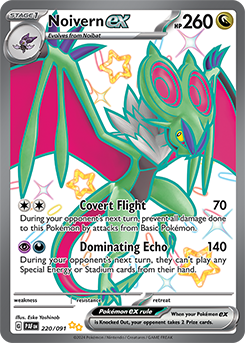Great Tusk’s New Place in Standard
Hello PokeBeach readers! Isaiah here and I am happy to write another article for you all! Last time, I talked about my current favorite archetype Roaring Moon and how I felt it was one of the most powerful decks in the current format. Since then, the Orlando Regional Championship has occurred, and sure enough, I was pretty spot on about Roaring Moon’s position in the current format.
With about 11% of Day 2 at the Orlando Regional Championship being Roaring Moon-based decks and with both the Koraidon and Dudunsparce variants having appeared in the Top 8, the archetype produced one of the strongest results of any deck in the field this weekend. As I expected, the Koraidon version ended up producing the stronger result of the two variants, placing second in the hands of Jake Ewart. His list was mostly standard, but it did come with a few techs as well. Notably, he included a Great Tusk and a Fire Energy.

I remember in the week leading up to the Orlando Regional Championship, I made an offhand comment about including Great Tusk as well as a Fire Energy to some friends of mine, including fellow writer Charlie Lockyer, but I mostly mentioned it as a joke. To my surprise, this tech ended up being good enough that not only did Charlie end up playing it, but other players also came to the same conclusion and chose to play it themselves. The Fire Energy is a surprisingly effective answer to the problem of Noivern ex, offering a way to cut through the effect of Covert Flight via Koraidon’s Shred attack. I am not sure if this particular tech is going to stick, as it is not super useful overall, and arguably is not even that important against Noivern ex if you play the Great Tusk as well. I am especially fond of the Great Tusk inclusion, though, and I expect that change to stick going forward.
One of the biggest arguments for Great Tusk which is also often the default assumption for the card’s purpose is to use it as a way to mill against Snorlax decks, giving you a mill win condition against them rather than taking Prize cards. While this is a viable win condition, it is almost never going to come up, as the better strategy is generally to put as many Flutter Mane in play as possible and fill the rest of your board with attackers, essentially removing Block as a win condition. Where this card truly shines is in the mirror match. Thinking about how the deck operates, it is almost a guarantee that you will get to the bottom of your deck rather quickly as you try to get to take a Knock Out every turn. As a result, it’s easy to end up with fewer than four cards in your deck, turning Great Tusk’s Land Collapse into an instant win condition. This means that you should almost always win the mirror because you will either be ahead on Prizes or your opponent will be ahead and likely play into Land Collapse. This emergence of Great Tusk has completely warped the mirror and will likely have a significant effect on the Indianapolis Regional Championships in early May.
Jake Ewart was not the only player to see success with Great Tusk in his deck, though. When the set list for Temporal Forces was revealed, many players immediately saw potential in a mill strategy similar to the old Durant from Noble Victories, but once the set came out, it became immediately apparent that the deck could barely compare to the power of Durant back in 2011, but that did not stop people from at least giving it a chance. Unfortunately, only one player playing Great Tusk Mill was able to make it into Day 2 of the Europe International Championship with the deck, and they ended with an underwhelming 204th place finish. At the Orlando Regional Championship, though, Grafton Roll and Michael Canaves decided to try a unique take on the deck, and as I have been playing it lately, it has immediately become one of my favorite archetypes in the current format. In their deck, they decided to take inspiration from the Dudunsparce build of Roaring Moon and use it as the primary draw engine for their Great Tusk deck. This change has felt like a massive improvement in my games so far, making the deck feel much more effective at finding the Ancient Supporter cards that it needs as well as all of its combo pieces in general. While Grafton Roll finished in a fairly mediocre 130th place and Michael Canaves barely missed Day 2, I could see this deck being extremely strong going forward, and at the current time, I could feasibly see myself playing it at the Indianapolis Regional Championship at the beginning of May.
With that in mind, how about we take a look at a deck list for this idea?
This concludes the public portion of this article.
If you'd like to continue reading, consider purchasing a PokeBeach premium membership! If you're not completely satisfied with your membership, you can request a full refund within 30 days.
Each week we post high-quality content from some of the game's top players. Our article program isn't a corporate operation, advertising front, or for-profit business. We set our prices so that we can pay the game's top players to write the best content for our subscribers. Each article topic is carefully selected, goes through multiple drafts, and is touched up by our editors. We take great pride in our program!

